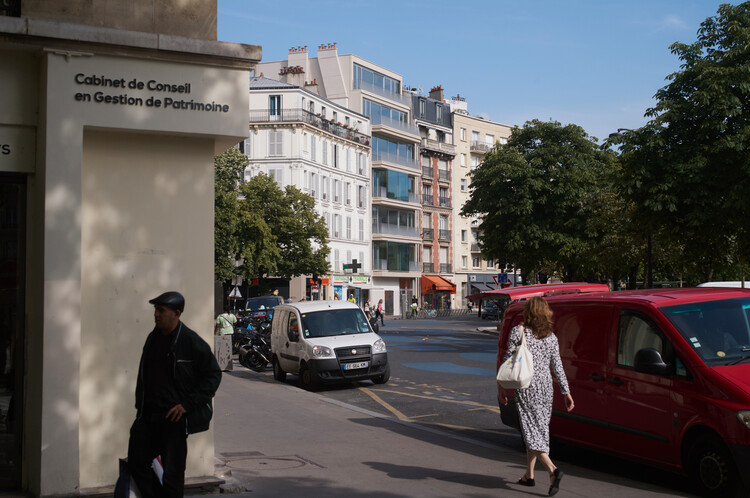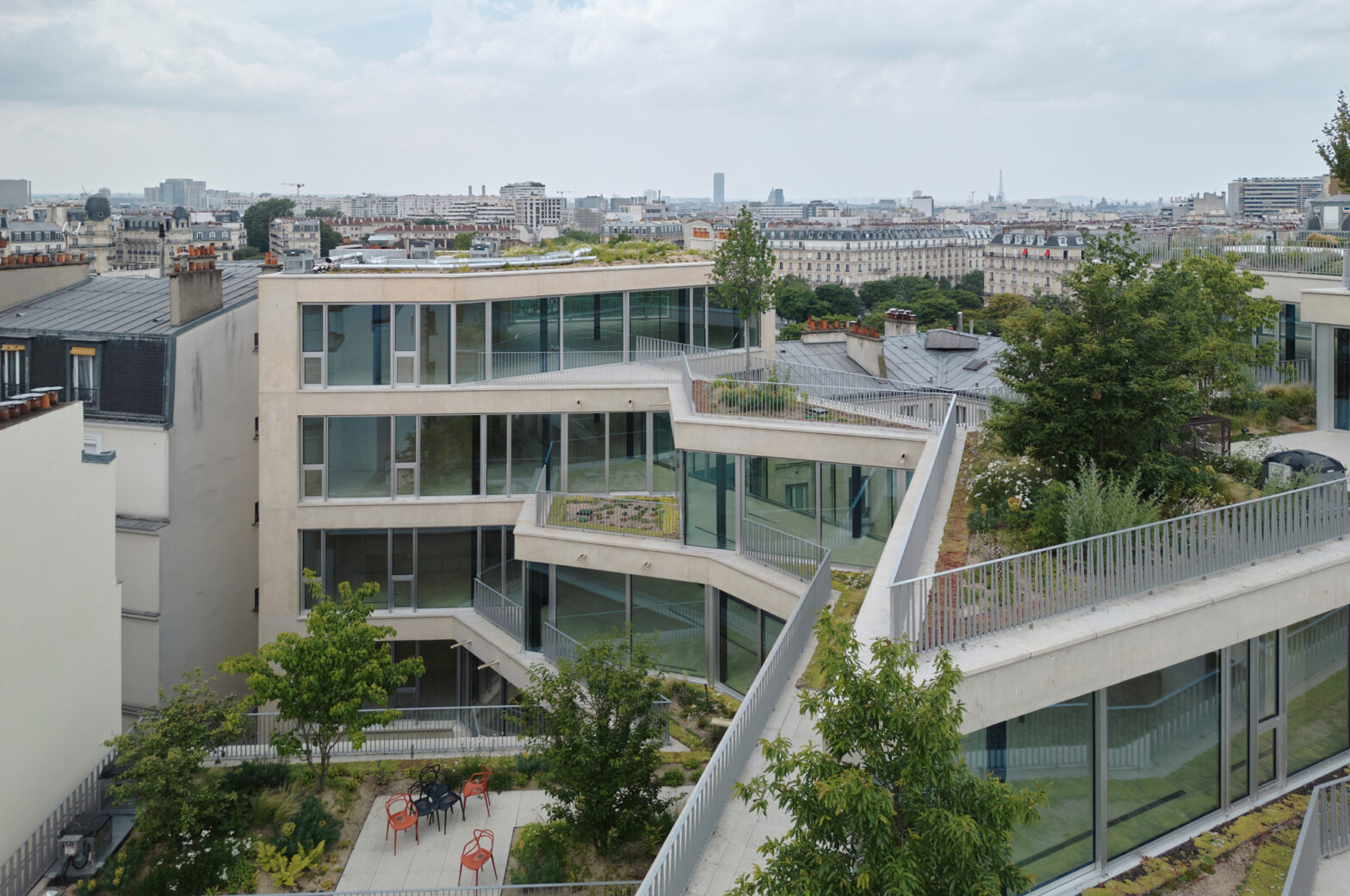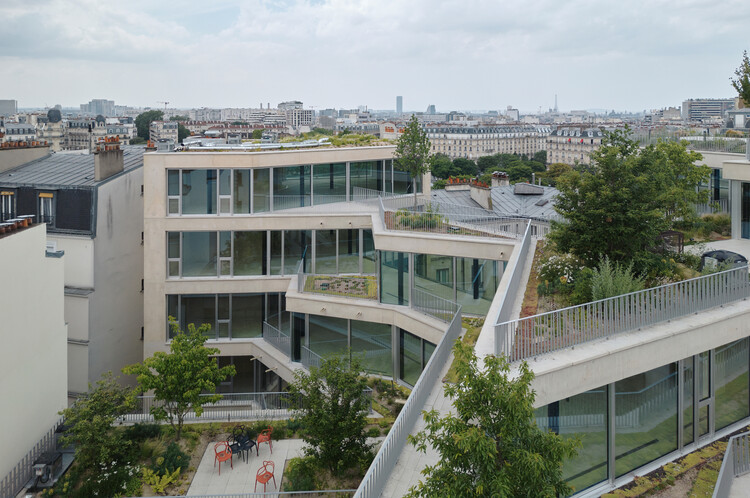
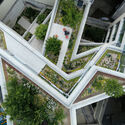
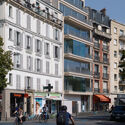
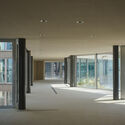
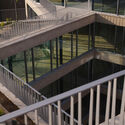

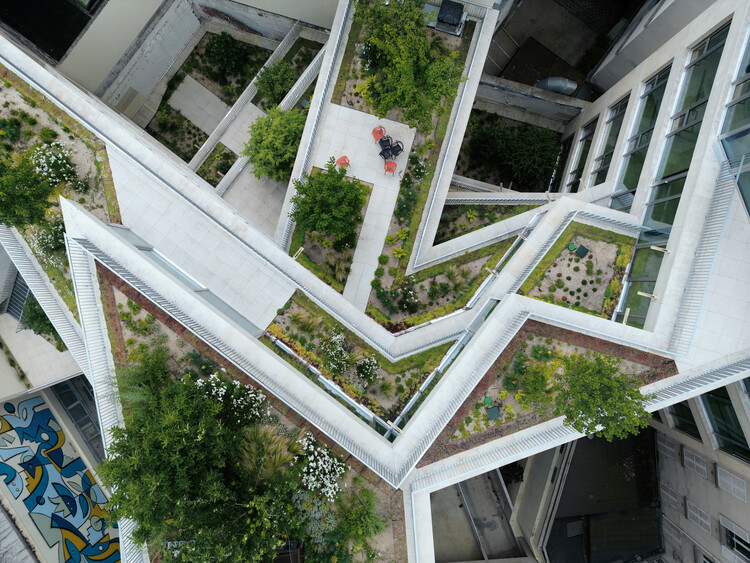
Text description provided by the architects. This project is located in the Place de la Nation in Paris and again provides the urban tissue by the reconstruction of an unmistakable office building. The intervention respects the architectural scope of its surroundings and contributes to a refined contemporary presence. The program comprises 1,700 m² retail surfaces on the ground floor and approximately 6,000 m² of office space to prioritize comfort, natural light and spatial quality. The project reacts to its attitude with a reserved but expressive architectural language. Two facades speak to Place de la Nation and the Avenue de Taileburg and refer to the rhythm and the proportions of the Haussmann architecture, while introducing a contemporary material palette and sophisticated details. This approach ensures reserved integration into the historical street scene and at the same time creates a strong identity.
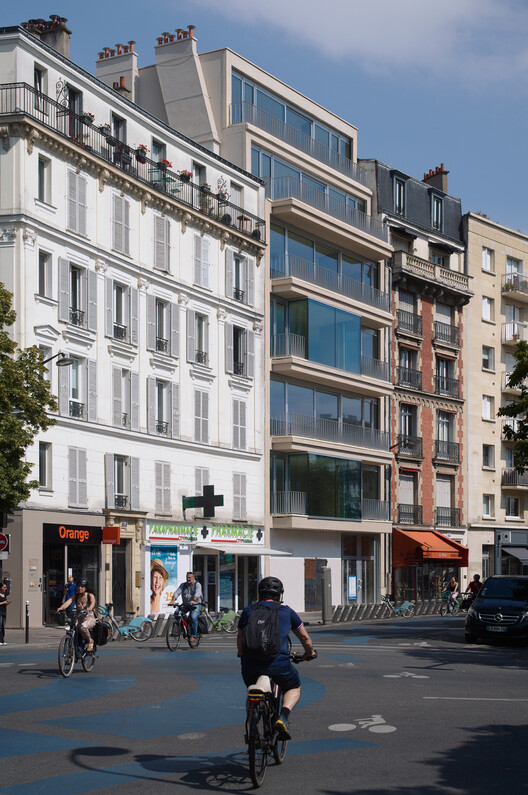

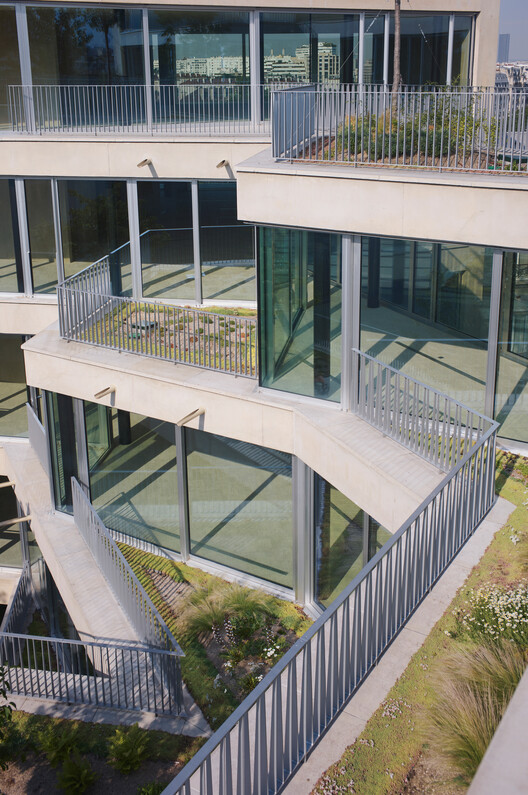
Work areas and human experience – the design prioritizes work areas that promote interaction, visibility and well -being. A balance between formal and informal meeting areas improves communication and cooperation. The spatial properties of the interiors are carefully calibrated and ensure optimal daylight penetration, thermal stability and acoustic comfort. The use of high -quality materials and designed details increases a feeling of durability and refinement. An essential endeavor to the project is the integration of nature in the workplace. Landscape terraces with a total of 600 m², place a continuous dialogue between architecture and green. These terraces are designed in layers that correspond to the vertical articulation of the building, and offer different vegetation scales, frame views and creates a feeling of withdrawal within the urban environment. The planting strategy follows the guidelines of the city of Paris and selects locals and seasonal species to improve biological diversity and to introduce subtle variations during the year.
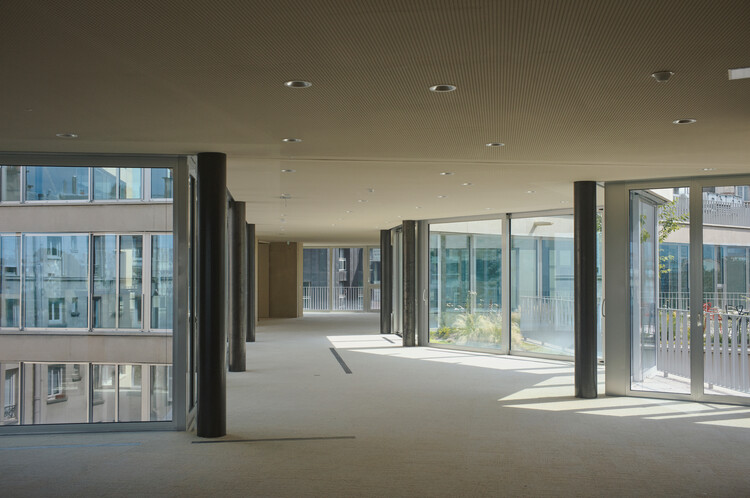
A dialogue between history and contemporary practice – the transformation of Place de la Nation is a development of the historical urban substance. Originally formalized in the late 19th century, the home buildings of the square provided a precedent for a strict architectural composition. The monument to the republic of Jules Dalou, which was inaugurated in 1899, continued to establish the place as a bourgeois landmark. The new intervention recognizes this layered story and contributes to a measured but contemporary reaction, which complements its context and at the same time satisfies contemporary needs.
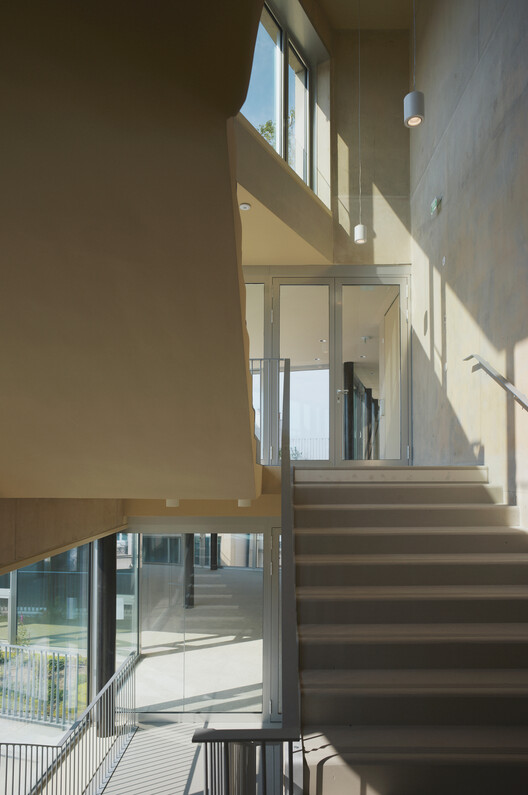
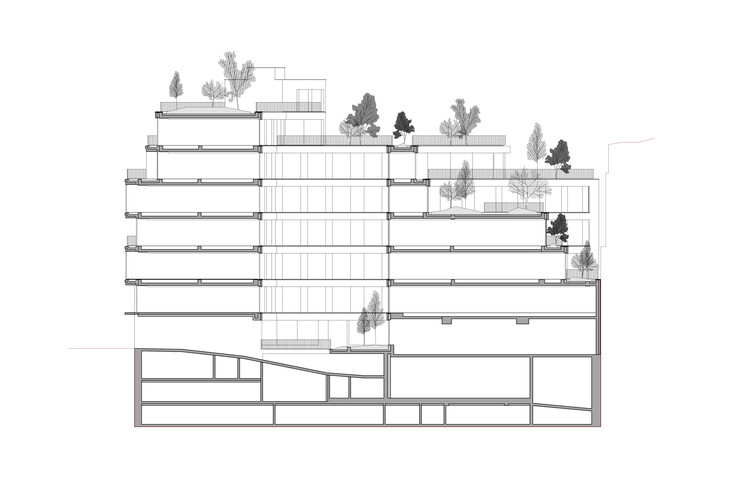
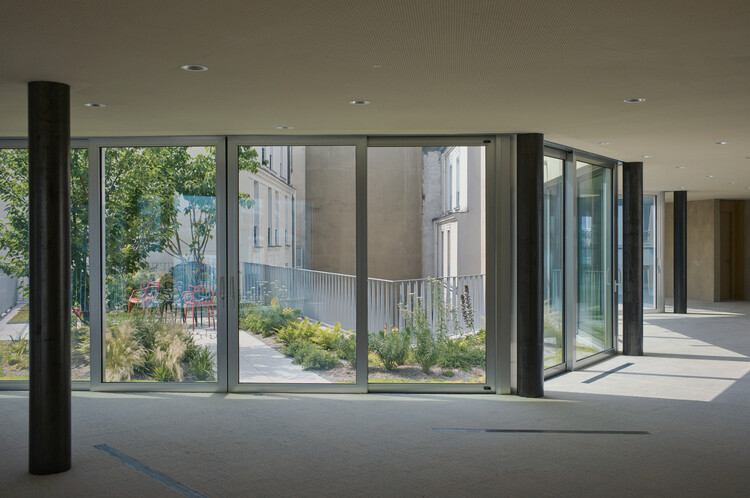
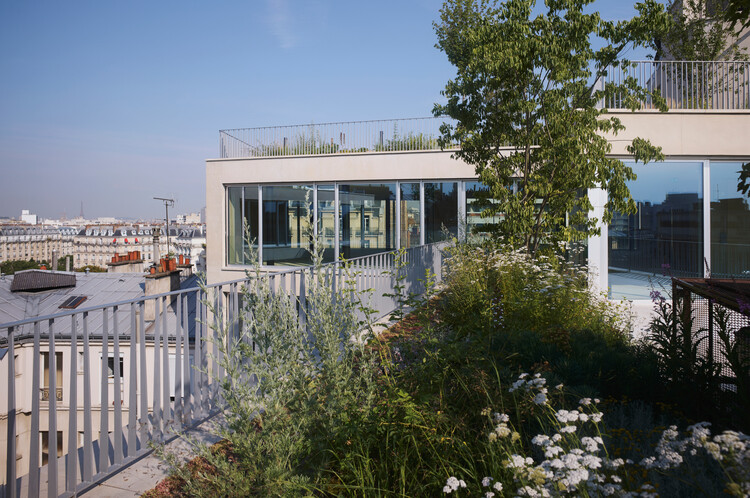
Spatial and material composition – the project deals with its surroundings by careful articulation of masses and materiality. Large arched windows frame important urban perspectives and act as extensions of the city within the office environment. Retail on the ground floor improves urban activation, its transparent facade increases connectivity with the public sector. A spacious, naturally illuminated entrance hall along the Avenue Taililleburg defines a clear arrival sequence, which leads to a vertical core that opens up to the landscape heart of the site. The architectural strategy includes adaptability and enables future spatial and programmatic changes. Soil plates of different proportions create dynamic interior environments, while visual connections to green enrich the experience of each level. The work areas outdoors confuse the threshold between the interior and the outside area and reinforce the idea of a living work area in nature.
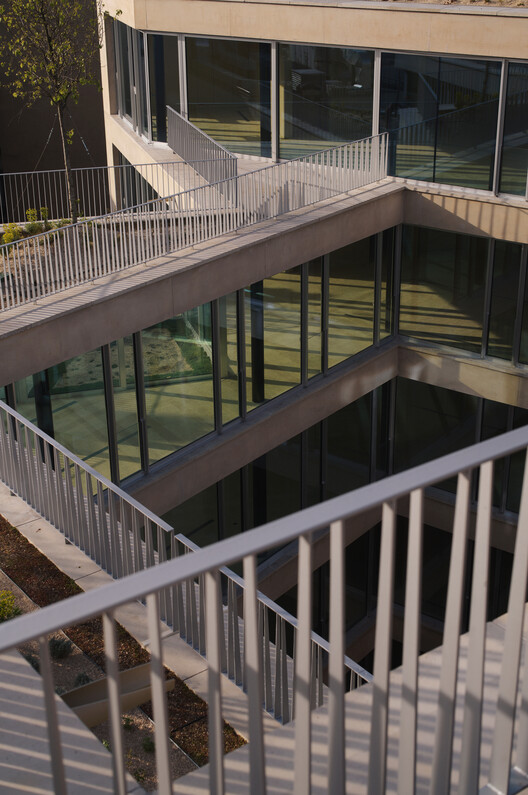
Materiality and light – the building is defined by a reserved material palette that emphasizes the longevity and sensory experience. Light gray concrete, cast in horizontal layers, forms the primary structural expression and subtly refers to the limestone tones of Haussmann Paris. In the direction of the city, these layers become more fragmented and dissolve into the surrounding urban substance. The play of light and shadow on these surfaces leads to a calm dynamic that reacts to the changing conditions of the day. The architecture goes into light as a primary element. Transparency, reflection and depth are examined by an interplay of glass, shadow and material tactility. The facades develop all day long and capture changing tones and reflections from the sky and the surrounding city. This dialogue between solidity and lightness, resistance and ephemeral defines the identity of the project – a contemporary addition that improves its historical environment and at the same time offers a timeless spatial experience.
